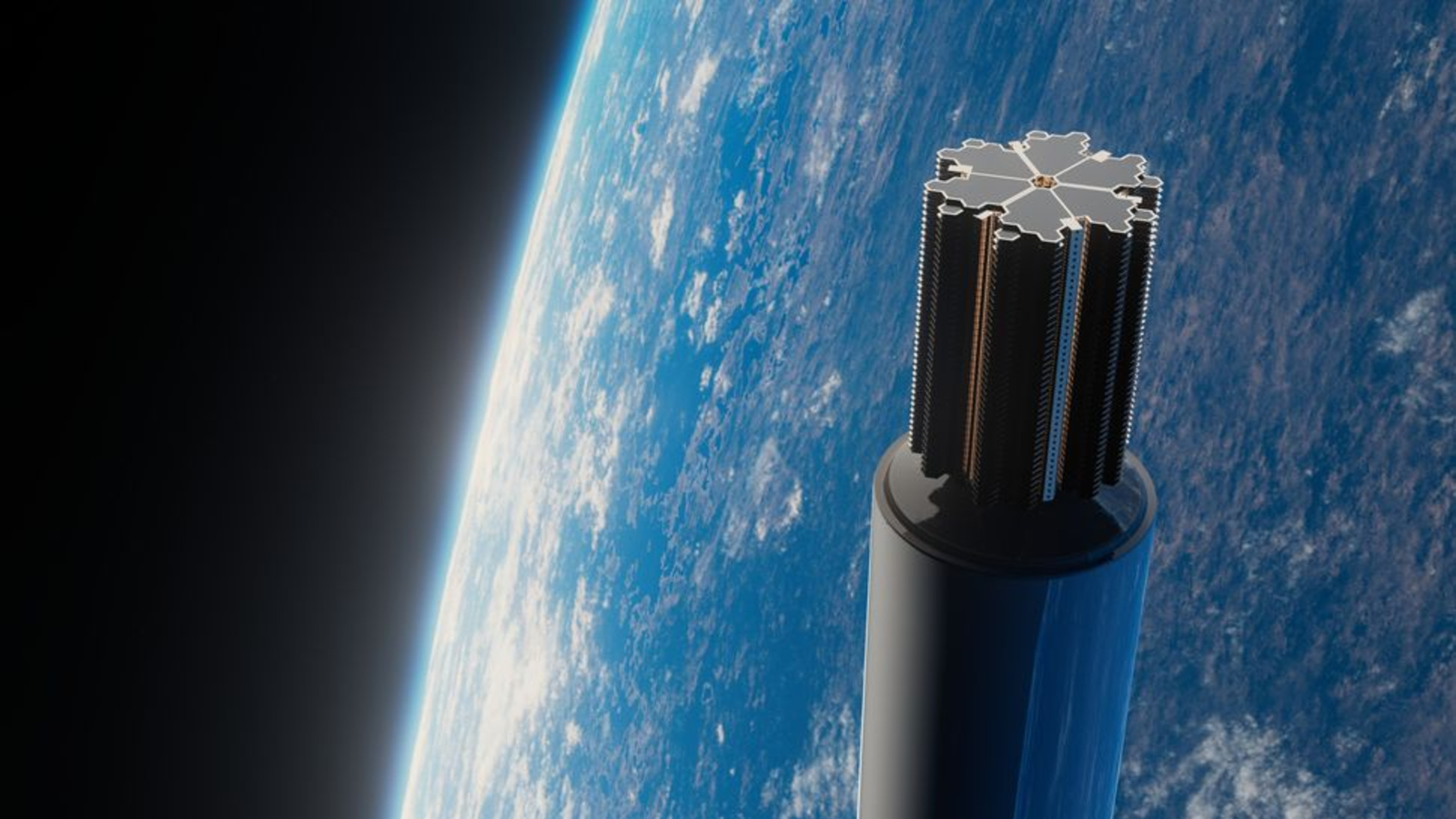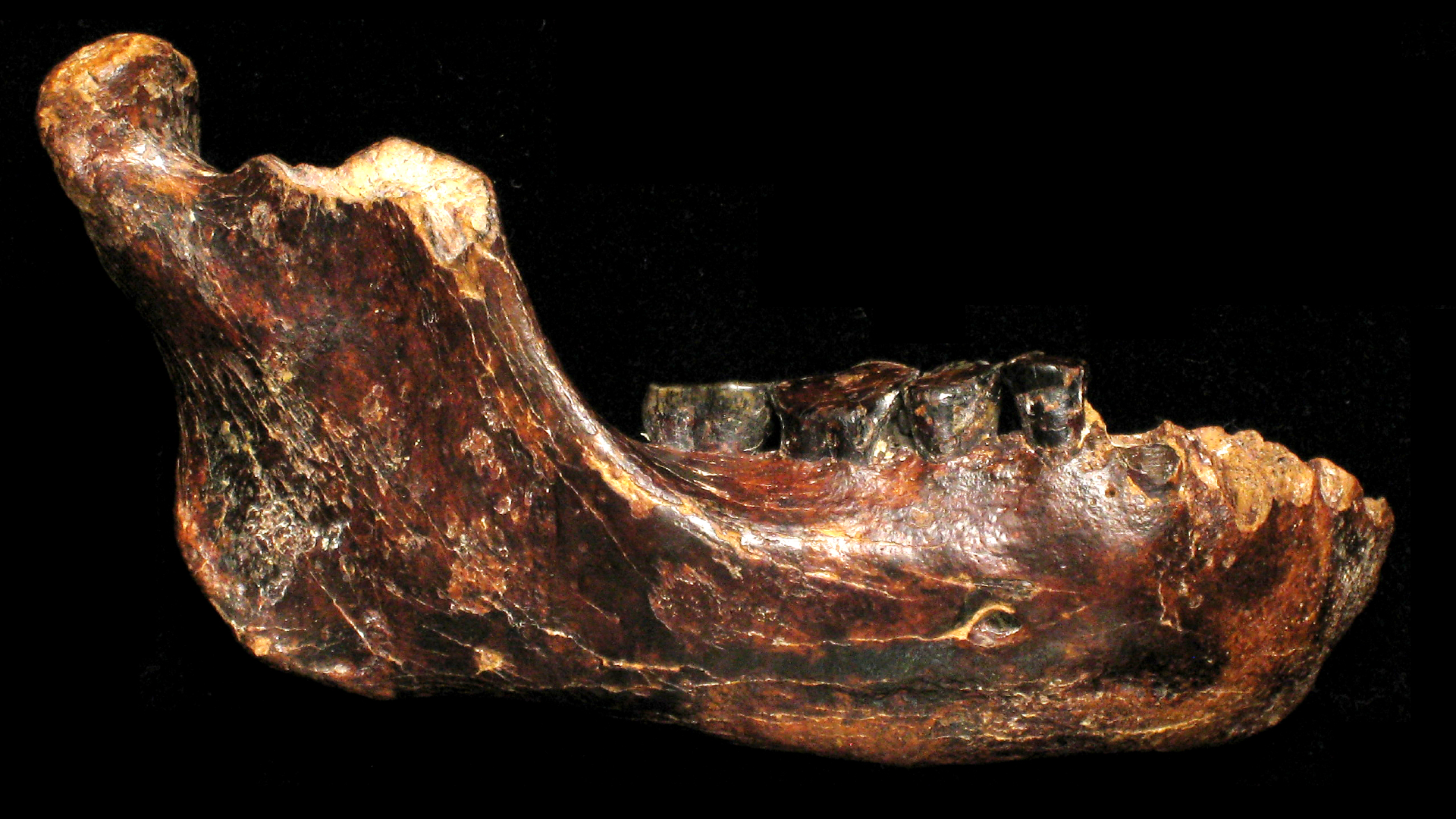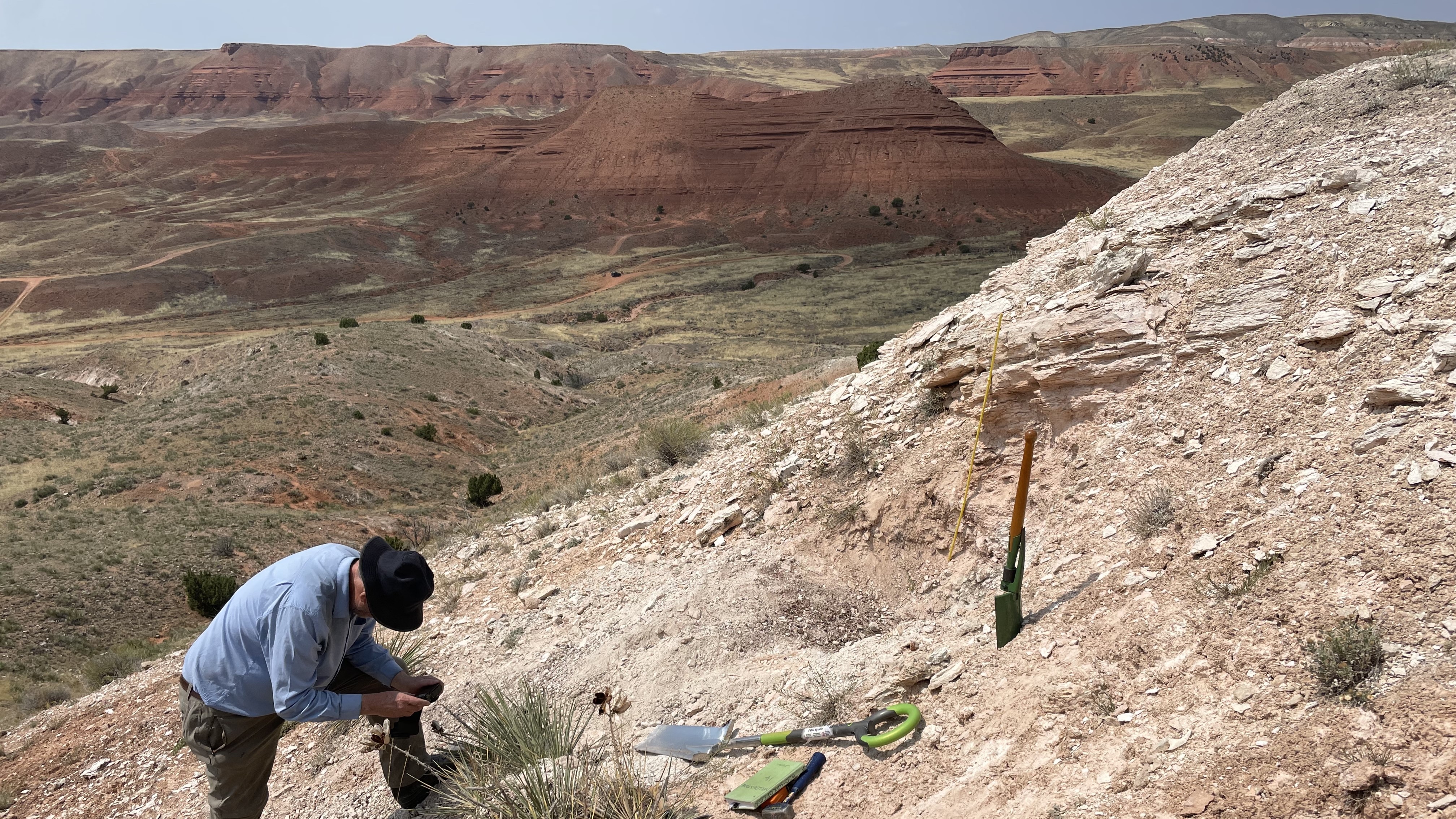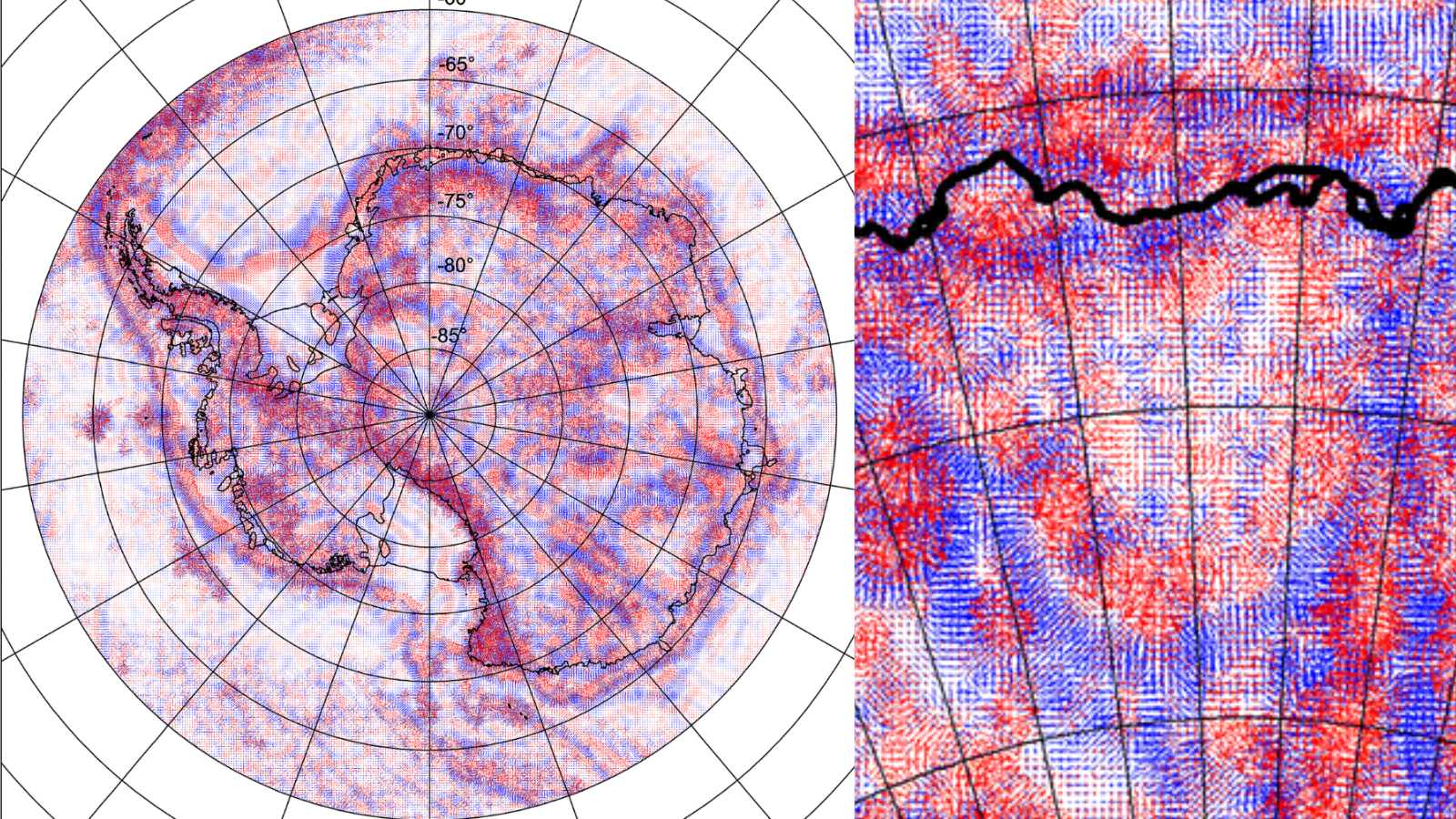A really big shark got gobbled up by another, massive shark in 1st known case of its kind
A pregnant porbeagle shark is believed to have been eaten by a great white, with the larger predator swallowing its tracking device off the coast of Bermuda, scientists report.
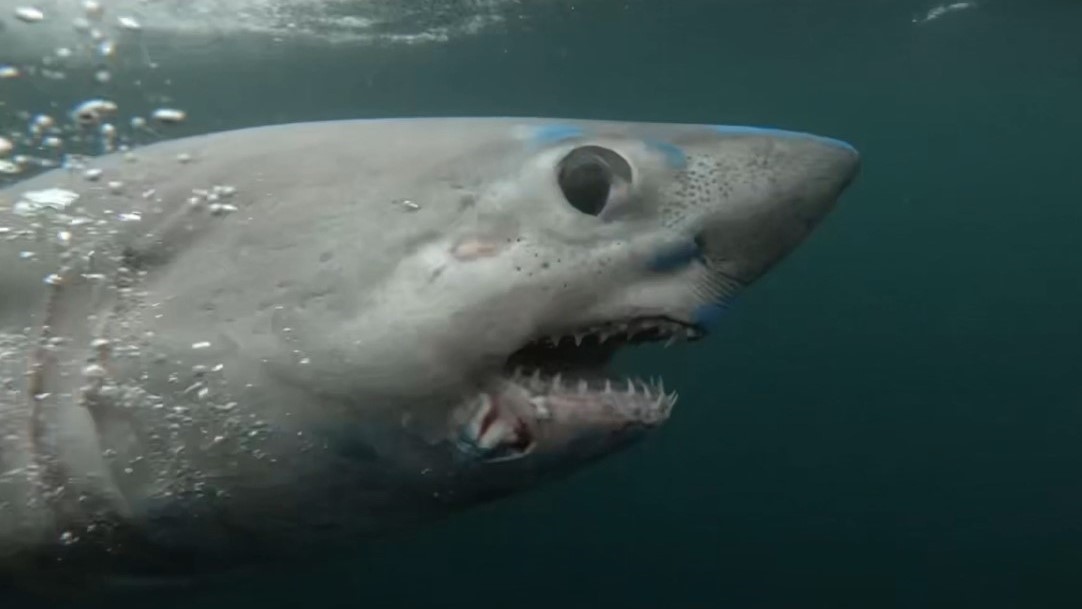
A large, predatory shark swimming near Bermuda was gobbled up by an even bigger shark — even swallowing the tracking device that was attached to it — in what scientists say is the first recorded case of its kind.
Porbeagle sharks (Lamna nasus) can grow to about 12 feet (3.6 meters) long. These large sharks patrol the Northern Atlantic Ocean as well as parts of the oceans of the Southern Hemisphere, ranging into the Antarctic. Their muscular, streamlined forms and angled, spear-like teeth make them formidable predators. But the porbeagle, it seems, is not immune to predation itself.
In a paper published Tuesday (Sept. 3) in the journal Frontiers in Marine Science, researchers describe the likely predation of a porbeagle shark by one of its larger relatives. "This is the first documented predation event of a porbeagle shark anywhere in the world," study lead author Brooke Anderson, marine fisheries biologist with the North Carolina Department of Environmental Quality said in a statement.
The pregnant female shark was tagged in October 2020 using both a satellite transmitter and a pop-off satellite archival tag (PSAT) near Cape Cod. Data from these devices was meant to track the shark's depth and geographic range over time. While satellite transmitters are permanent, the PSAT tags are designed to detach from the animal after a year, having recorded data on its movements.
The porbeagles follow their prey, changing position in the water column throughout the day.
Their depth is calculated using pressure and temperature data from the PSAT tags. Anomalies in pressure and temperature indicate that the animal has died, or the tag has somehow detached prematurely.
Sign up for the Live Science daily newsletter now
Get the world’s most fascinating discoveries delivered straight to your inbox.
In this case, the shark ranged between the surface and 328 feet (100 m) down until December 2020, when it began diving to depths of up to 2,600 feet (800 m) during the day and hovering around 650 feet (200 m) at night. It maintained that pattern as it moved south from where it was tagged to waters off the shore of Bermuda.
On March 24, 2021, the temperature patterns that correlated to its recorded depth changed drastically. While the shark had previously been moving through waters that ranged from 43.5 to 74.3 degrees Fahrenheit to –(6.4 to 23.52 degrees Celsius), on that day the tag recorded temperatures between 61.5 to F76.5 F (16.4 C to 24.72 C) despite remaining at a similar depth range.
The researchers believe this shift meant the tag was inside the stomach of another shark at the time as temperatures were warmer than they would have otherwise been at those depths.
Based on the geographical ranges of sharks large enough to eat a porbeagle, the predator was likely either a white shark (Carcharodon carcharias) or a shortfin mako (Isurus oxyrhinchus), the authors said. A white shark seems more likely given the more stable depth range of the tag while it was ingested — makos tend to make deeper dives and then rapidly ascend.
The team said the finding has implications for the porbeagle population — a species already under threat from historic overfishing. It is listed as vulnerable by the IUCN. "The predation of one of our pregnant porbeagles was an unexpected discovery," Anderson said. "We often think of large sharks as being apex predators. But with technological advancements, we have started to discover that large predator interactions could be even more complex than previously thought."

Richard Pallardy is a freelance science writer based in Chicago. He has written for such publications as National Geographic, Science Magazine, New Scientist, and Discover Magazine.
